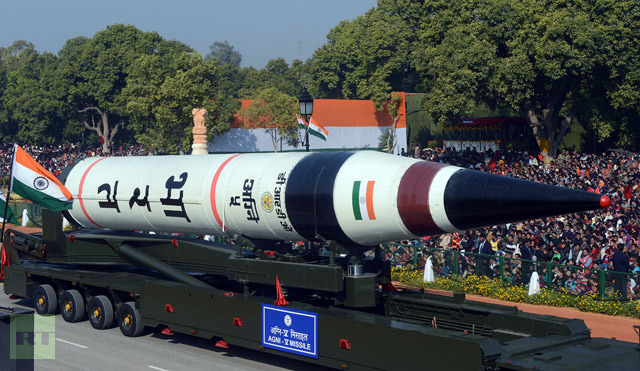India used its annual Republic Day parade to display its first-ever intercontinental ballistic missile, just hours after the country’s president made loaded comments about its relationship with Pakistan.
 India used its annual Republic Day parade to display its first-ever intercontinental ballistic missile, just hours after the country’s president made loaded comments about its relationship with Pakistan.
India used its annual Republic Day parade to display its first-ever intercontinental ballistic missile, just hours after the country’s president made loaded comments about its relationship with Pakistan.
Republic Day, nominally a national holiday celebrating the introduction of a constitution following independence, is traditionally a display of nationalistic fervor, capped by a massive procession showing off all the latest military hardware.
The pride of place this year was taken by Agni-V, a new-generation missile capable of carrying nuclear warheads as far as China and central Russia, which has been developed at a cost of more than half a billion US dollars. Although the missile underwent a successful test launch in August last year, this was the first time it has been shown to the wider public.
With a range of at least 5,500 km (with some experts claiming its true “classified” reach is actually 8,000 km) the project puts India in an elite club of nuclear superpowers with intercontinental capabilities. The only other countries with such weapons are the US, Russia, UK, France, China and the Zionist entity.
The display was covered closely by Chinese media, which have previously reacted warily to India’s desire to develop a longer-range weapon.
Last year India invested nearly $50 billion into its armed forces – making it the world’s seventh biggest national defense spender.
Other prominent display items included a scale model of INS Vikramaditya, a converted Soviet-era aircraft carrier that will enter into service later this year, and Arjun tanks, the mainstay of the country’s modern armed forces.